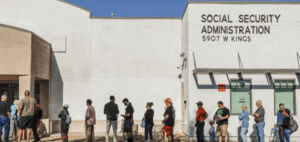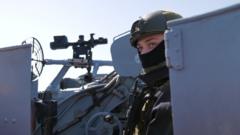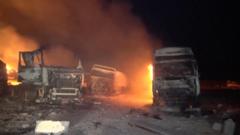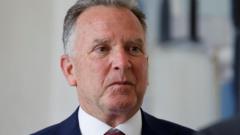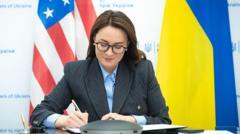While hopes for a peaceful resolution linger, both sides confront underlying mistrust and conflicting narratives after their initial discussions.
**Mixed Signals as US-Iran Nuclear Negotiations Progress Amid Rising Tensions**

**Mixed Signals as US-Iran Nuclear Negotiations Progress Amid Rising Tensions**
Diplomatic efforts continue between the US and Iran, though military threats and inconsistent messages cast a shadow over the talks.
In a tense climate, the US and Iran have conducted their second round of nuclear talks in Rome while scheduling a follow-up meeting for next week. However, optimism is clouded by rising military threats and ambiguous signals. US President Donald Trump continually reminds Iran of the stakes involved—“a deal or war”—and has hinted that Israel may take military action if negotiations collapse. Despite these threats, Trump suggested that he is willing to allow room for diplomacy, emphasizing his preference for a peaceful resolution.
Following a "constructive" first round of discussions held in Oman, attention is now focused on the rapid developments taking place. Trump stated that he would make a decision on Iran's nuclear program soon, following allegations of military plans regarding Iranian nuclear sites. In 2018, Trump withdrew from the 2015 nuclear agreement, which saw Iran limit its nuclear operations under the condition of easing sanctions. With a stockpile of enriched uranium now capable of producing nuclear weapons, Iran insists it will not pursue such a path.
The specter of military action seems to have nudged Iran back to the negotiation table, yet Iranian officials assert their willingness to talk was solely due to US limitations on its demands. However, the prospect of a deal remains uncertain. Trump’s Special Envoy to the Middle East, Steve Witkoff, has called for a framework mandating Iran to halt its nuclear enrichment, although his mixed messages have drawn criticism from Iranian officials.
Ongoing diplomatic engagements add further complexity, as Saudi Arabia's Defence Minister visited Tehran to convey messages from King Salman to Ayatollah Khamenei. At the same time, Iranian officials are bolstering ties with Russia amid shifting geopolitical landscapes influenced by the Ukraine conflict. Concurrently, international nuclear oversight has been spotlighted as the IAEA seeks to re-establish inspection protocols.
Suspicion lingers in the backdrop, particularly as both sides present different interpretations of the talks’ nature—while the US claims direct engagement, Iran characterized its involvement as mediated. After the initial discussions, Iranian currency saw a surge, reflecting the populace's hope for alleviation from dire economic conditions worsened by internal and external pressures.
Iranian leadership remains acutely aware of the delicate balance between negotiation outcomes and public sentiment, hinting that military aggression would provoke serious consequences and potentially alter Iran’s stance on nuclear development altogether. With underlying tensions exacerbated by a history of distrust, the path forward remains fraught with uncertainty, as both sides navigate the intricate landscape of diplomacy.
Following a "constructive" first round of discussions held in Oman, attention is now focused on the rapid developments taking place. Trump stated that he would make a decision on Iran's nuclear program soon, following allegations of military plans regarding Iranian nuclear sites. In 2018, Trump withdrew from the 2015 nuclear agreement, which saw Iran limit its nuclear operations under the condition of easing sanctions. With a stockpile of enriched uranium now capable of producing nuclear weapons, Iran insists it will not pursue such a path.
The specter of military action seems to have nudged Iran back to the negotiation table, yet Iranian officials assert their willingness to talk was solely due to US limitations on its demands. However, the prospect of a deal remains uncertain. Trump’s Special Envoy to the Middle East, Steve Witkoff, has called for a framework mandating Iran to halt its nuclear enrichment, although his mixed messages have drawn criticism from Iranian officials.
Ongoing diplomatic engagements add further complexity, as Saudi Arabia's Defence Minister visited Tehran to convey messages from King Salman to Ayatollah Khamenei. At the same time, Iranian officials are bolstering ties with Russia amid shifting geopolitical landscapes influenced by the Ukraine conflict. Concurrently, international nuclear oversight has been spotlighted as the IAEA seeks to re-establish inspection protocols.
Suspicion lingers in the backdrop, particularly as both sides present different interpretations of the talks’ nature—while the US claims direct engagement, Iran characterized its involvement as mediated. After the initial discussions, Iranian currency saw a surge, reflecting the populace's hope for alleviation from dire economic conditions worsened by internal and external pressures.
Iranian leadership remains acutely aware of the delicate balance between negotiation outcomes and public sentiment, hinting that military aggression would provoke serious consequences and potentially alter Iran’s stance on nuclear development altogether. With underlying tensions exacerbated by a history of distrust, the path forward remains fraught with uncertainty, as both sides navigate the intricate landscape of diplomacy.

